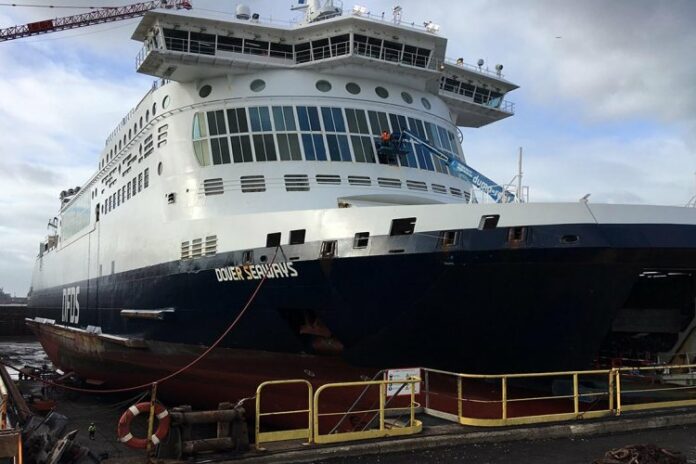DFDS recently upgraded and rebuilt Dover Seaways’ propulsion and control system. The goal is fuel savings.
Performance Manager in DFDS’ Technical Organization Lina Barsøe Christensen says:
”Our short-term climate action plan consists of projects that fall into three categories. So far, we have planned projects that are anti-fouling initiatives – using coating and surface treatment on a ship to control or prevent the attachment of unwanted organisms. Some projects deal with technical hardware upgrades. And finally, we have the Fuel Performance Programme projects, including hardware updates and software for decision support on board and insights ashore. More projects will be added as we learn more about how effective each project is.”
Over 18 days in February and March, the system was installed and tested together with the classification society Lloyd’s Register during the vessel’s annual dry docking in Dunkerque, France.
Superintendent Jan Blak says:
“By applying the latest technology within route planning and propulsion control to the existing machinery installations and bridge control equipment, and utilising the full design potential of the machinery, we hope to see fuel and CO2 savings of up to 6 %. Specifically, we are installing an Artificial Intelligence-supported system that will optimise the relation between propeller pitch and engine RPM, taking these two components to the point where the propeller efficiency is at its maximum in relation to the Expected Time of Arrival for which you have programmed your system.”
Jan’s part of the Technical Organisation’s short-term climate action plan team. He says:
“To achieve the optimal settings, the system continuously looks at parameters like the ship’s position, speed and course over ground, the water depth below the keel, the engine load and the engine maker’s recommendations, fuel consumption, as well as the wind direction and speed. Based on all of this data, the system will automatically maintain the speed, propeller pitch and RPM, which will take you to your destination port on time at the lowest possible overall fuel consumption.”
“A range of equipment has been replaced or extensively modified, like the RPM control devices, the optic fibre communication systems between bridge and engine room and the high-accuracy fuel oil flow meters. A server system that constantly monitors and controls the process based on the electronic maps (ECDIS system) has been installed. This server system is constantly connected to the Internet via the ship’s VSAT system to receive updated weather forecasts. This connection is also used for live data retrieval so that shore-based DFDS personnel can monitor the system performance in real-time or compile data for in-depth analysis of the overall vessel performance.”



